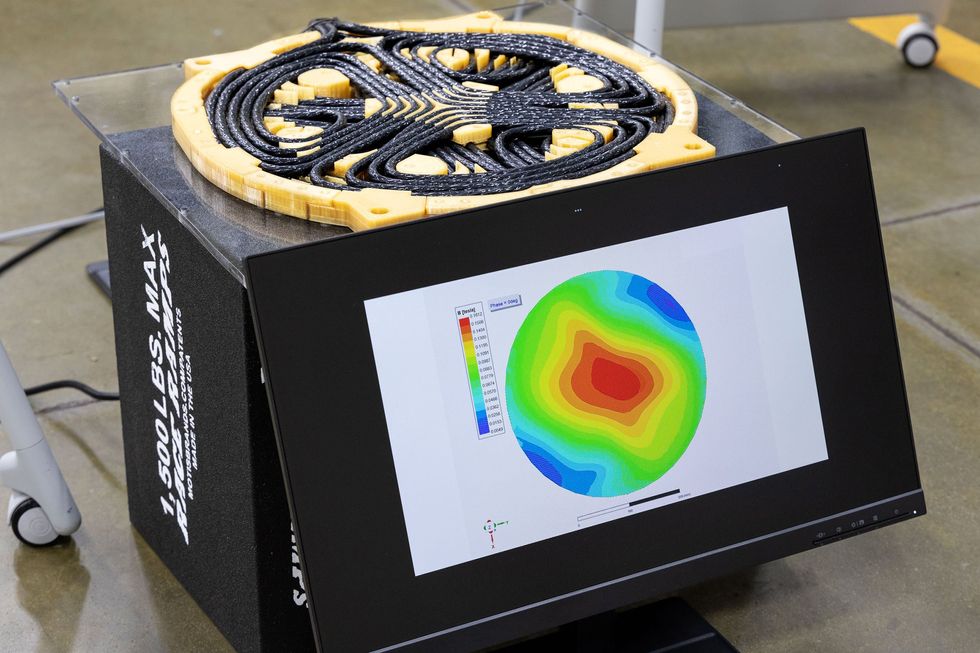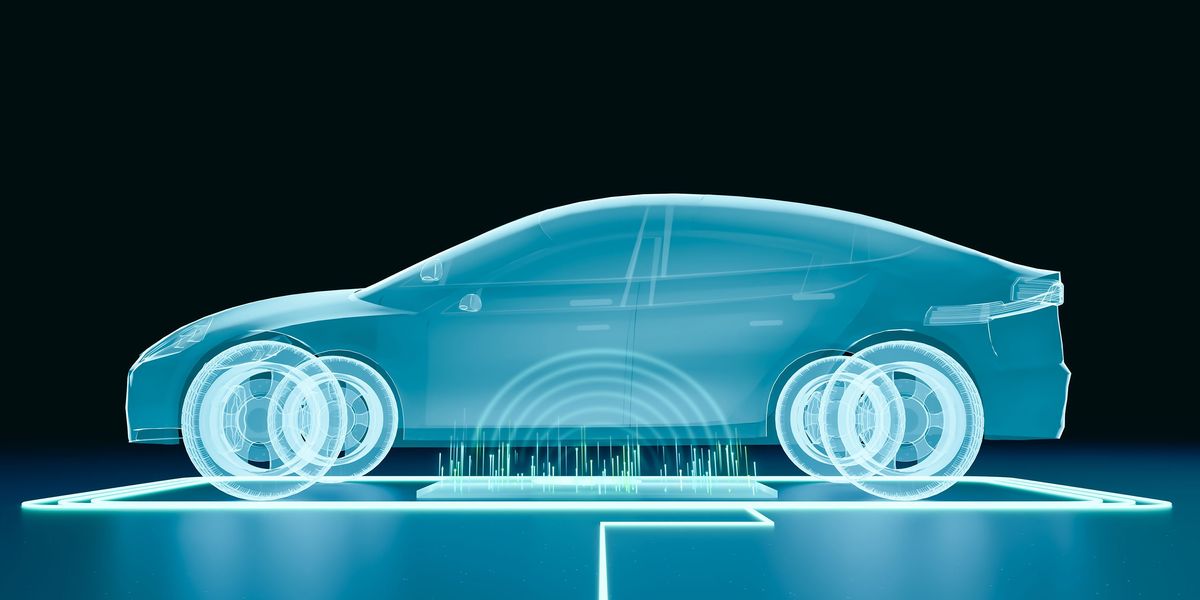50 by 20: Wireless EV Charging Hits Key Benchmark
Researchers at Oak Ridge National Laboratory in Tennessee recently announced that they have set a record for wireless EV charging. Their system’s magnetic coils have reached a 100-kilowatt power level. In tests in their lab, the researchers reported their system’s transmitter supplied enough energy to a receiver mounted on the underside of a Hyundai Kona EV to boost the state of charge in the car’s battery by 50 percent (enough for about 150 kilometers of range) in less than 20 minutes.
“Impressive,” says Duc Minh Nguyen, a research associate in the Communication Theory Lab at King Abdullah University of Science and Technology (KAUST) in Saudi Arabia. Nguyen is the lead author of several of papers on dynamic wireless charging, including some published when he was working toward his PhD at KAUST.
In 15 minutes, “the batteries could take on enough energy to drive for another two-and-a-half or three hours—just in time for another pit stop.”
–Omer Onar, Oak Ridge National Laboratory
The Oak Ridge announcement marks the latest milestone in work on wireless charging that stretches back more than a decade. As IEEE Spectrumreported in 2018, WiTricity, headquartered in Watertown, Mass., had announced a partnership with an unspecified automaker to install wireless charging receivers on its EVs. Then in 2021, the company revealed that it was working with Hyundai to outfit some of its Genesis GV60 EVs with Wireless charging. (In early 2023, Car Buzz reported that it had sniffed out paperwork pointing to Hyundai’s plans to equip its Ionic 5 EV with wireless charging capability.)
The plan, said WiTricity, was to equip EVs with magnetic resonance charging capability so that if such a vehicle were parked over a static charging pad installed in, say, the driver’s garage, the battery would reach full charge overnight. By 2020, we noted, a partnership had been worked out between Jaguar, Momentum Dynamics, Nordic taxi operator Cabonline, and charging company Fortam Recharge. That group set out to outfit 25 Jaguar I-Pace electric SUVs with Momentum Dynamics’ inductive charging receivers. The receivers and transmitters, rated at 50 to 75 kilowatts, were designed so that any of the specially equipped taxis would receive enough energy for 80 kilometers of range by spending 15 minutes above the energized coils embedded in the pavement as the vehicle works its way through a taxi queue. Now, according to Oak Ridge, roughly the same amount of charging time will yield about 1.5 times that range.
The Oak Ridge research team admits that installing wireless charging pads is expensive, but they say dynamic and static wireless charging can play an important role in expanding the EV charging infrastructure.
 This magnetic resonance transmitter pad can wirelessly charge an EV outfitted with a corresponding receiver.Oak Ridge National Laboratory
This magnetic resonance transmitter pad can wirelessly charge an EV outfitted with a corresponding receiver.Oak Ridge National Laboratory
Omad Onar, an R&D staffer in the Power Electronics and Electric Machinery Group at Oak Ridge and a member of the team that developed the newest version of the wireless charging system, envisions the static versions of these wireless charging systems being useful even for extended drives on highways. He imagines them being placed under a section of specially marked parking spaces that allow drivers to pull up and start charging without plugging in. “The usual routine—fueling up, using the restroom, and grabbing coffee or a snack usually takes about 15 minutes or more. In that amount of time, the batteries could take on enough energy to drive for another two-and-a-half or three hours—just in time for another pit stop.” What’s more, says Onar, he and his colleagues are still working to refine the system so it will transfer energy more efficiently than the one-off prototype they built in their lab.
Meanwhile, Israeli company Electreon has already installed electrified roads for pilot projects in Sweden, Norway, Italy, and other European countries, and has plans for similar projects in the United States. The company found that by installing a stationary wireless charging spot at one terminal end of a bus route near Tel Aviv University (its first real-world project), electric buses operating on that route were able to ferry passengers back and forth using batteries with one-tenth the storage capacity that was previously deemed necessary. Smaller batteries mean cheaper vehicles. What’s more, says Nguyen, charging a battery in short bursts throughout the day instead of depleting it and filling it with up with, say, an hour-long charge at a supercharging station extends the battery’s life.
From Your Site Articles
Related Articles Around the Web

